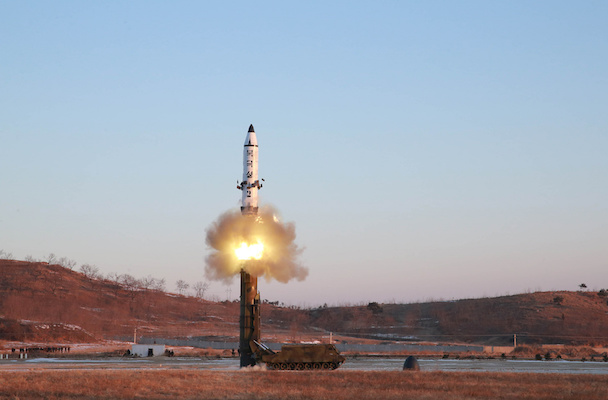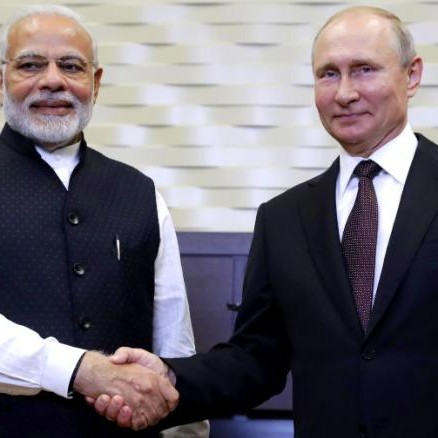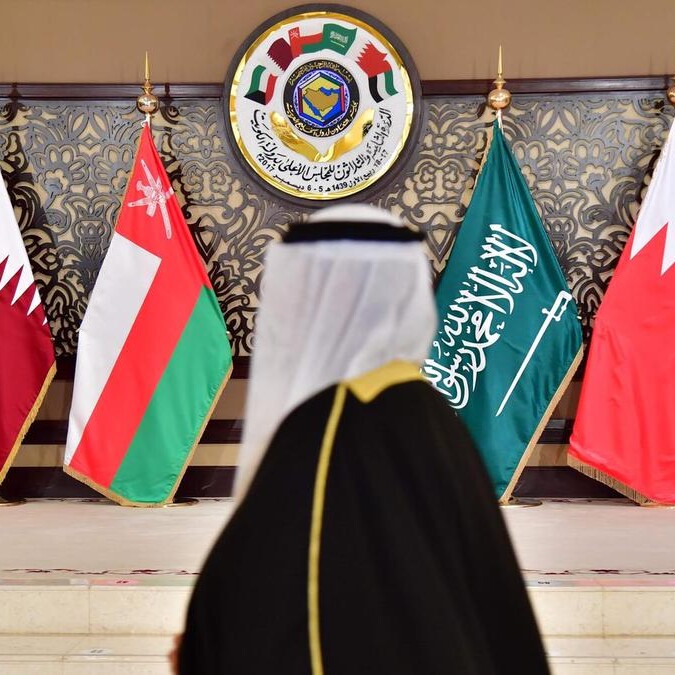Move looks set to grab US attention; bigger question is whether calibrated series of provocations follows
North Korea fired a barrage of missiles into the Sea of Japan on Saturday morning, the first significant missile tests it has engaged in since November 2017. The military fired multiple missiles from a peninsula off the east coast town of Wonsan, in a northeastern direction. between 9:06 and 9:27, according to a message sent to foreign reporters by the South Korean presidential office.
The missiles were short-range, and flew 70-200 kilometers into the Sea of Japan, which Koreans call the East Sea.
The media message noted that the South Korean and US militaries were analyzing the situation.
It is not clear what kind of weapon they were; they may have been anti-shipping missiles, rather than the kind of ballistic missile that so worries Japan and the United States. Saturday’s test follows last month’s test by North Korea of a mysterious “tactical weapon,” which may have been an anti-tank rocket. One noted expert told Asia Times that North Korea may have started what looks like a series of phased provocations.
And given that US President Donald Trump has repeatedly praised North Korea for its moratorium on nuclear and missile tests, Saturday’s unexpected move has the potential to plunge the Korean Peninsula back into the stratospheric tensions that prevailed in late 2017.
End of Kim’s ‘charm offensive?’
North Korea halted missile tests after successfully testing a Hwaseong-15 intercontinental ballistic missile in November 2017, which the state said completed its ICBM program.
While experts remain unsure if the hardline state has successfully mastered the technology of a re-entry vehicle for the ICBM warhead or the targeting systems to guarantee an accurate strike, consensus opinion is that the country now has the ability to heft a nuclear device to the mainland United States.
The 2017 tensions, marked by a war of words between North Korean leader Kim Jong Un and Trump, were eased at the beginning of 2018, after Kim unleashed an unprecedented diplomatic offensive. Standout moments included North Korea’s last-minute attendance at the 2018 Winter Olympics in South Korea, and a range of summits: The formerly isolated Kim met with Chinese President Xi Jinping four times, South Korean President Moon Jae-in three times and Trump twice.
However, his last summit with Trump, in Hanoi in February, failed to deliver any results after the US president decided to “walk” without any deal being reached. It has since emerged that the United States demanded that North Korea surrender all its nuclear weapons, to be followed by sanctions removal. The North Korean side favored a more gradual process in which it would dismantle its central Yongbyon nuclear facility in return for phased sanctions relief.
North Korea made clear its displeasure with the Hanoi summit outcome in two unusual press conferences. But it has also made clear, in a message delivered by Kim to the Supreme People’s Assembly last month, that it will continue to hold open the door for dialogue, notably a third summit with Trump, until the end of this year.
Since Hanoi, Kim has apparently shuffled his leadership team, and last month tested a mysterious “tactical” weapon – which may have been an anti-tank missile.
Saturday’s tests come days after Kim held his first-ever meeting with Russian President Vladimir Putin, and one day after Japanese Prime Minister Shinzo Abe offered to meet with Kim “unconditionally.”
Tense days ahead
Saturday’s missile launches mark a major change in North Korean behavior, which has been restrained since November 2017.
“The goal is to remind Donald Trump that if North Korea is ignored, sooner or later they will become a problem,” Andrei Lankov, a noted North Korea expert at Seoul’s Kookmin University, told Asia Times.
“It is a risky bet, but if they are under domestic economic pressure, it makes sense,” he added, with reference to sanctions imposed in 2016 that are believed to be placing heavy pressure on the North Korean economy.
The question is what North Korea’s next actions may be.
“We might expect launches of short- and medium-range missiles, and suspicious activities at missile and nuclear sites that are designed to catch the eye of satellites,” Lankov said. “Until the year’s end, they will do a lot of open provocations, but will not violate the major moratoriums they have imposed, on ICBMs and nuclear weapons: They know if they break those moratoriums the Americans will go ballistic.”
The most dangerous move Kim could make, short of an ICBM or nuclear test, would be a satellite launch, Lankov suggested. While satellites are themselves not banned, the launch vehicles that place them in the atmosphere are dual use, being also used for ICBMs.
Redazione
La redazione di Babilon è composta da giovani giornalisti, analisti e ricercatori attenti alle dinamiche mondiali. Il nostro obiettivo è rendere più comprensibile la geopolitica a tutti i tipi di lettori.
Russia-India: un partenariato resiliente
3 Apr 2025
Le relazioni tra India e Russia affondano le radici in una lunga storia di cooperazione strategica, caratterizzata da…
Romania tra estrema destra e interferenze russe
21 Mar 2025
Quarantasei anni, Victoria Stoiciu è senatrice del Partito Social Democratico rumeno. Le abbiamo chiesto un commento…
Venezuela, che fine ha fatto il cooperante italiano Trentini?
12 Mar 2025
Ne parla il libro di Paesi Edizioni Intanto a Caracas, nuovo saggio sulla crisi del Venezuela di Maurizio Stefanini:…
Come fare impresa nel Golfo
16 Ott 2024
Come aprire una società in Arabia Saudita? Quali sono le leggi specifiche che regolano il business nel Paese del Golfo…




